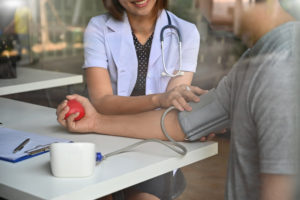 It’s scary to think that your blood pressure readings could be way off. Inaccurate blood pressure readings might mean you’re taking medicine you don’t need. Or worse, you might not be aware of how high your blood pressure really is.
It’s scary to think that your blood pressure readings could be way off. Inaccurate blood pressure readings might mean you’re taking medicine you don’t need. Or worse, you might not be aware of how high your blood pressure really is.
Whether you’re at the doctor’s office or the comfort of your own home, preparing for the reading is essential. In fact, a lack of preparation can swing readings as much as 10 percent, which is a big difference when we’re talking about blood pressure. A difference like that can make a dangerous situation look safe.
Advertisement
To avoid hiding high blood pressure or making it appear worse than it is, there are international guidelines to ensure accurate readings. To make sure you’re on top of your blood pressure, here are the things you must know to get an accurate reading.
- Avoid caffeinated beverages or smoking for at least 30 minutes before.
- Sit quietly for five minutes before beginning the reading. Don’t look at social media, bounce your legs, etc. Stay relaxed and refrain from moving.
- During the measurement, sit on a chair with your back straight and feet flat on the floor. Your elbow should be supported on a table or another surface at roughly heart level.
- The inflatable part of the cuff that tightens around the arm should cover at least 80% of the upper arm. Going too high or too low could significantly affect readings.
- The cuff should be directly on your skin, not over a shirt sleeve.
- Do two measurements separated by a few minutes. If the readings are different by more than five points, take another reading after a couple of minutes.
- If readings come in high, it may be worthwhile to contact your doctor. If the reading is done at a doctor’s office and comes in high, they might wait and retest in a few weeks before issuing a hypertension diagnosis.
- Do readings in both arms at least once. The right will typically show a higher pressure than the left and knowing both can provide a more accurate idea of blood pressure.
Monitoring blood pressure is the key to avoiding hypertension and tracking your blood pressure reducing efforts. Having accurate information can help prevent the need for medications and a potential cardiovascular event.
